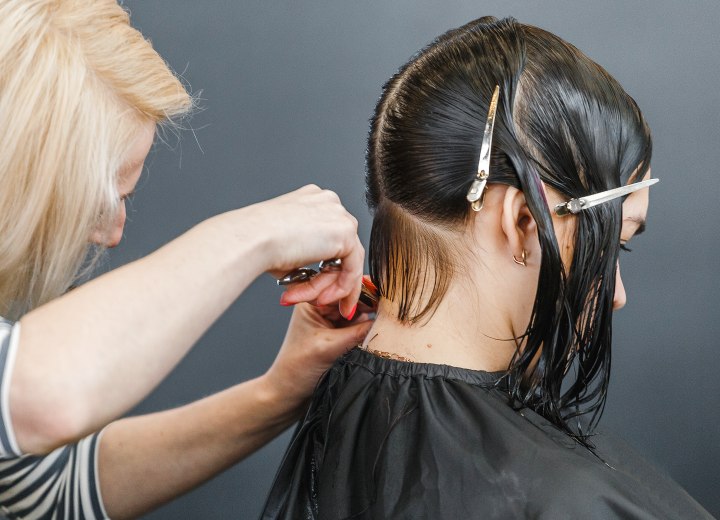Hair Donation & New Style

What kind of hairstyle would you recommend? I always have bangs, but what I'd really want is something that's flattering and doesn't take much work. With long hair, my everyday style is to throw it back in a low ponytail. I want a cut that still looks good with curly hair.
Completely off-topic to the hairstyles: while my hair is growing out, I've been noticing that my hair has been getting more broken or split ends lately, but I'm taking care of my hair the same way I always have. Is there some way to fix the issue or is it just that my hair is at the end of its growing length and has just started doing it naturally?
You may want to consider an A-line bob cut, which can be textured to control much of the "bushiness" which will occur as a result of the curly hair's rebounding volume. The A-line bob has longer length at the face and grows progressively shorter as you move around the back of the head. The difference in lengths doesn't have to be dramatic, but it does have to be different. This style is good because the initial cut for donations often results in longer lengths at the front of the head naturally.
You have to remember that as your hair grows longer, simply brushing or combing the hair can cause much more stress on the hair. In addition, by the time the hair reaches 6 inches in length, that last one-half to one inch has been exposed to the environment and countless styling processes for nearly a year. While growing your hair, you need to be using a shampoo and conditioner rich in protein and designed to smooth the hair, and need to make sure you condition your hair daily, even when you don't shampoo.
In addition, you should be using a leave-in conditioner before any heat-drying or heat-styling process. Finally, weekly deep conditioning treatments and monthly hot oil treatments will help you to see far fewer split ends when performed along with making sure not to overstress the hair. Avoid brushing the hair more than necessary to remove tangles, and always use a wide-tooth comb to gently comb through the hair when wet or covered with conditioner.
©Hairfinder.com
See also:
What kind of hairstyle is good for natural curly hair?
How to maintain curly hair
Pictures of angled bobs